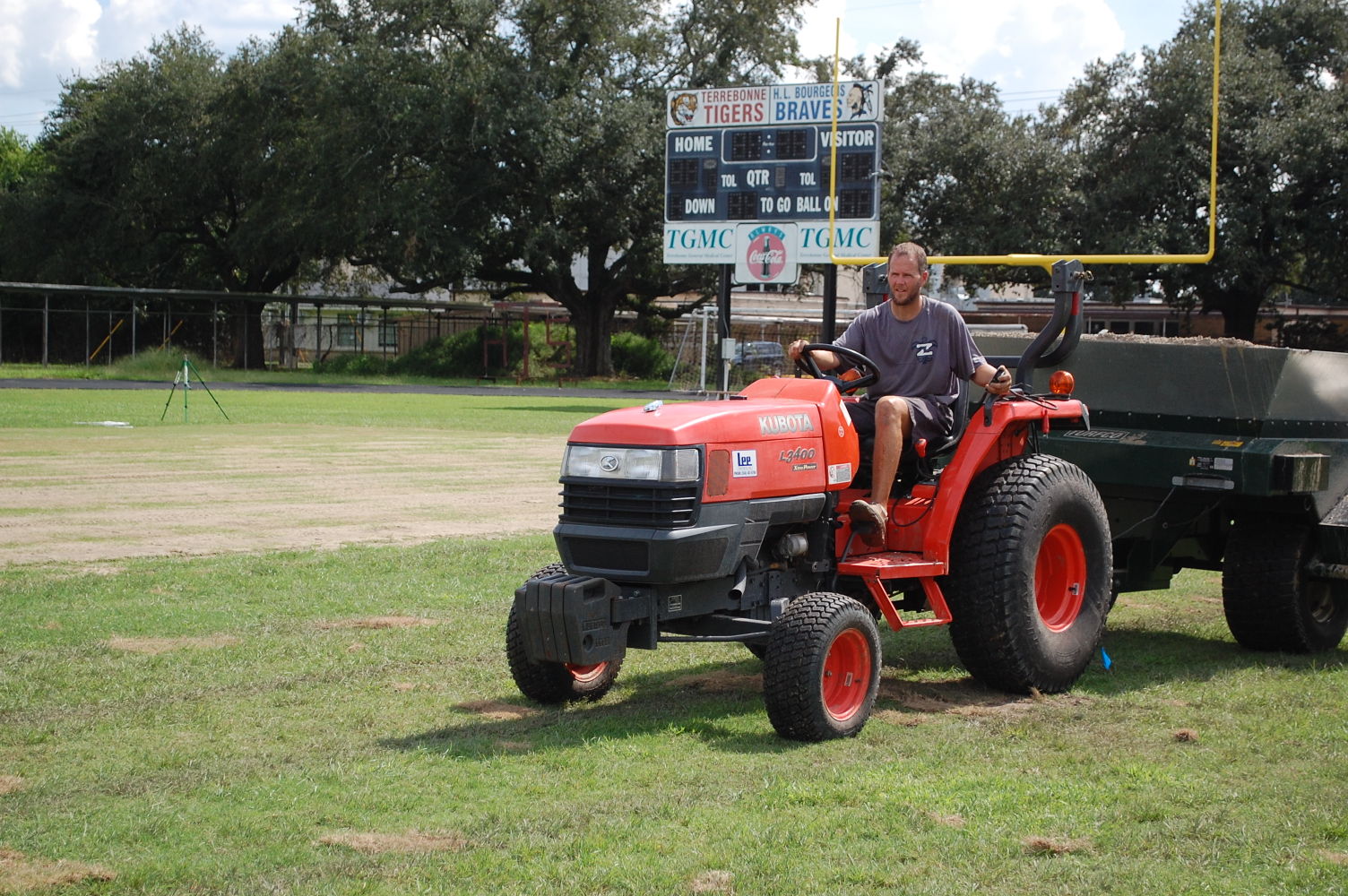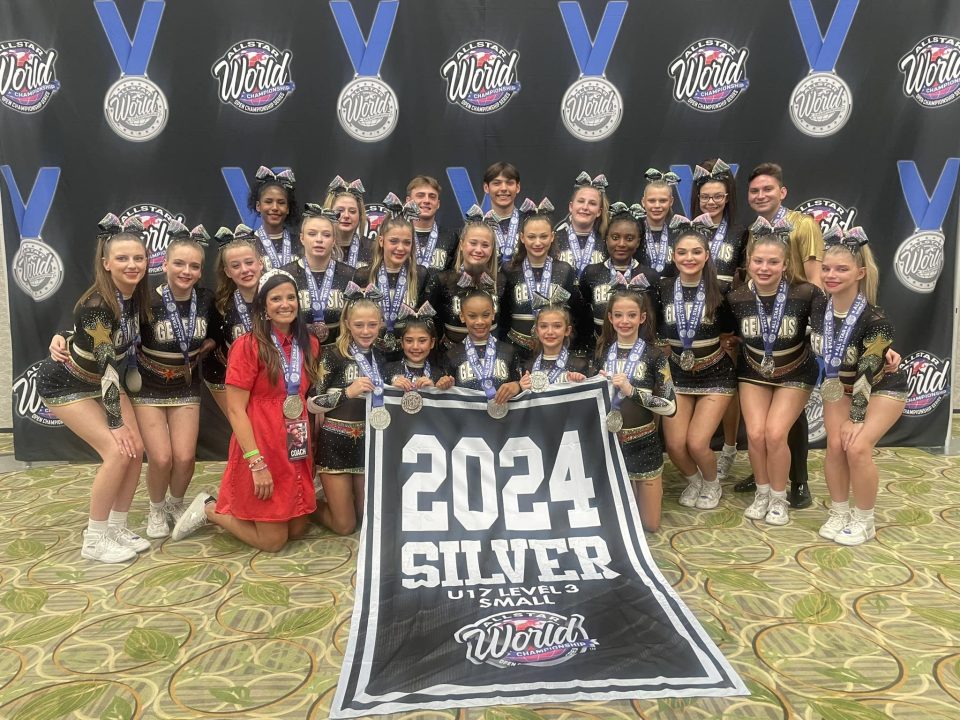
TPSB exploring field turf for local high schools
October 14, 2014
Plaisance unveils challenging slate
October 14, 2014In this week’s edition of The Times, Staff Writer Richard Fischer reported that the Terrebonne Parish School Board unanimously approved authorization for Superintendent Philip Martin and his staff to gather information relative to the installation of field turf at both Terrebonne and South Terebonne’s football fields.
Martin will now spend the next two months gathering details and will present a report back to school board members on December 8, 2014 regarding the intricacies of completing such a project in Terrebonne Parish.
The project would require quite a financial investment for the school board – a number roughly estimated to be somewhere in between $1 million and $1.5 million, according to estimates provided by field turf installation experts. That’s a tough pill for some to swallow considering that we’re currently enduring a time where Louisiana schools are being slashed and burned because of budget cuts and other difficult economic conditions pertaining to the educational system.
But even with the financial numbers crunch existent, we think that it’s time for the school system to swallow the tough pill and protect our children by rolling out a field turf carpet on our area’s two primary playing fields.
And guess what? We think that Lafourche Parish needs to stay on its heels too and follow suit and do the same.
Isn’t school supposed to be about the kids – especially when it pertains to their safety?
The playing fields – especially in Terrebonne Parish – are over run with games. There are just too many schools playing on the same grass – a recipe for disaster.
Think about it – both Terrebonne and South Terrebonne share their stadiums with another high school. Terrebonne shares with H.L. Bourgeois, and South Terrebonne shares with Ellender.
But what gets lost in the shuffle are all of the junior high games, band practices, track meets, PE classes and everything else that call the field home, as well.
Heck, don’t forget soccer season either. All four high schools split the two fields for that sport, as well, and a lot of that season is played during the worst weather months of the year.
The grass just simply never has time to relax, and it annually succumbs to the stress of its playing schedule and gets torn to shreds.
I’ve now been around local high school sports for 20-plus years. In my experience, even in a dry year, Terrebonne and South Terrebonne’s fields become chopped up pretty quickly.
But when you get a series of rainy days like we had this past summer, it’s just not a good situation all-around, and we hope that the problem is rectified before someone gets seriously hurt on a surface overrun with mud, potholes, sandy areas and dead grass.
Don’t think this is a safety issue? Think again. The statistics don’t lie.
Montana State University professor Michael C. Meyers conducted a study titled “Incidence, Mechanisms and Severity of Game-Related College Football Injuries on FieldTurf Versus Nature Grass: A Three-Year Prospective Study.”
In Meyers’ work, he examined a total of 465 college football games – 230 on field turf and 235 on natural grass.
After studying the games, Meyers reported that the games on field turf had 22 percent fewer severe injuries, 12 percent fewer concussions and 42 percent fewer ACL-ligament trauma, compared to games played on real grass.
He even added poor weather to his study and indicated that there were 42 percent fewer injuries on rainy games played on field turf compared to rainy games played on natural grass surfaces.
The fields he examined are some of the finest natural grass fields in the country – fields kept in prime condition by some of the biggest and most prominent collegiate institutions in the country.
No offense to our prep schools locally, but our fields just don’t get much money to stay in that same top-tier shape.
Our grass gets chopped up and tattered much quicker than the college fields do, thus likely increasing the risk of injury throughout a game and a season, as well.
Listen, I know that a million-plus bucks isn’t chump change and that’s a huge investment for a school district to make, but I think the math shows that this is something that pays for itself in the long run.
Over the course of a season, schools spend tens of thousands of dollars mowing, painting and sodding local fields.
Guess what? If you get field turf, it’s a one-time cost that will last upwards of 25-30 years, if not more, depending on how well everything within the structure is maintained along the way.
Outside of a few minor fees to occasionally shampoo and clean the carpet, all of the money spent is incurred up-front.
This, of course, means that once it’s paid off, you’re done forever – unlike grass that constantly needs to be mowed, painted and trimmed multiple times throughout the football, soccer and entire school season.
The cost is steep, but our kids don’t deserve to risk severe injury every Friday night on substandard fields.
There’s no better time than the present to rectify the problem by doing the right thing and getting this done.
Football is a physical game and undoubtedly injuries will occur over the course of a grind. But if you have an opportunity to limit injuries, why wouldn’t that be something to throw support to?
St. Charles Parish schools all have it, and they’ve reported no problems with the ways that their turf fields have been laid out.
E.D. White has it, and their coaches and boosters have raved about the ease and durability the turf provides.
It’s now time that Terrebonne and Lafourche step up to the plate and do the same.
It’s also time for our billion-dollar oilfield companies to pitch in and throw a little money into the projects, as well – especially if their contributions are the make or break factor in getting this taken care of.
This isn’t just a football thing; It’s a soccer thing, a P.E. thing and a safety thing, as well.
Every kid in our local middle school and prep school system would benefit from this major investment.
It sure seems like a no brainer to me.
Get it done.











